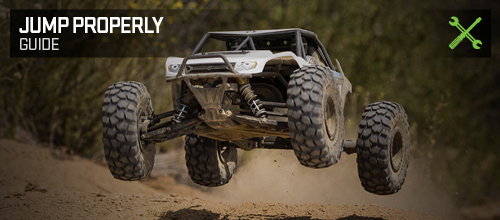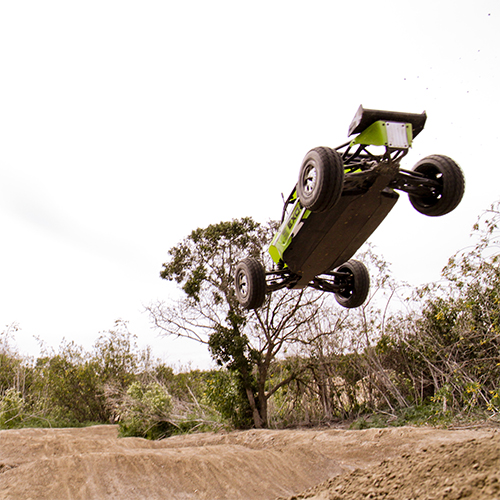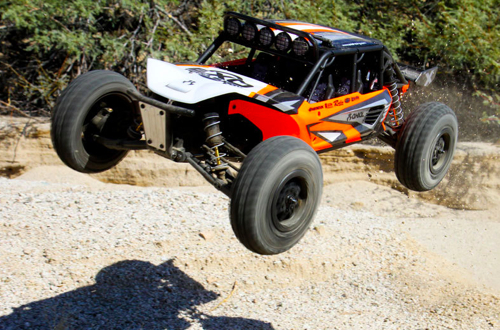Posted: 12/2/14

If you got started in RC with one of Axial's rock crawlers, you may not know how to properly jump. What is there to it? There's more to it than pointing your vehicle at a jump and launching it. The part you may not know is that you can actually use the throttle and brakes to control how the vehicle flies through the air.
If you have experience with dirt bikes you may catch on that the throttle can be used in the air to actually raise the front of the bike. The opposite happens when brakes are applied--the front end lowers. Every RC vehicle jumps differently, but they all react, at least to some degree, to throttle and brake inputs. 4WD vehicles such as the Yeti, Yeti XL and EXO Terra Buggy offer more in-air control than 2WD vehicles. Vehicles with bigger tires can also react better to throttle and brake inputs--if they have enough power to really spin the tires. Also, in general, the more power, the more control in the air.
The best way to approach a jump surface is with even speed. Your suspension reacts as you accelerate and decelerate on the ground just like it does in the air as described above. When you approach a ramp, for example, and suddenly accelerate, on or right before the ramp surface, the rear suspension will compress. It will then rebound when you let off the throttle. Without getting too deep in a physics lesson, the rebounding suspension will cause the vehicle to start to lift its rear higher than the front. Even speed--neither an increase or decrease in speed--will provide the most consistent results.

If the vehicle is nose-diving in the air, grab and hold the throttle until the attitude of the vehicle is level or slightly nose up. Dropping the nose using the brakes requires a slightly different method. Only a tap of the brakes is needed. Too much brake will quickly over rotate the rear up and over the nose.

The key to a perfect landing, as far as throttle input is concerned, is to have the wheel speed match the vehicle's speed upon touchdown. That's a whole lot easier said than done, so concentrate on not having the brakes applied or having the tires spinning too fast. This will keep the drivetrain from taking too much of a jolt and keep the vehicle from darting out of control.
From approach, to launch, to being airborne and finally landing, jumps go by pretty quickly. It's sometimes hard to imagine you'll have time to think and do all of the actions described above, but with just a little bit of practice, it will all be second nature.